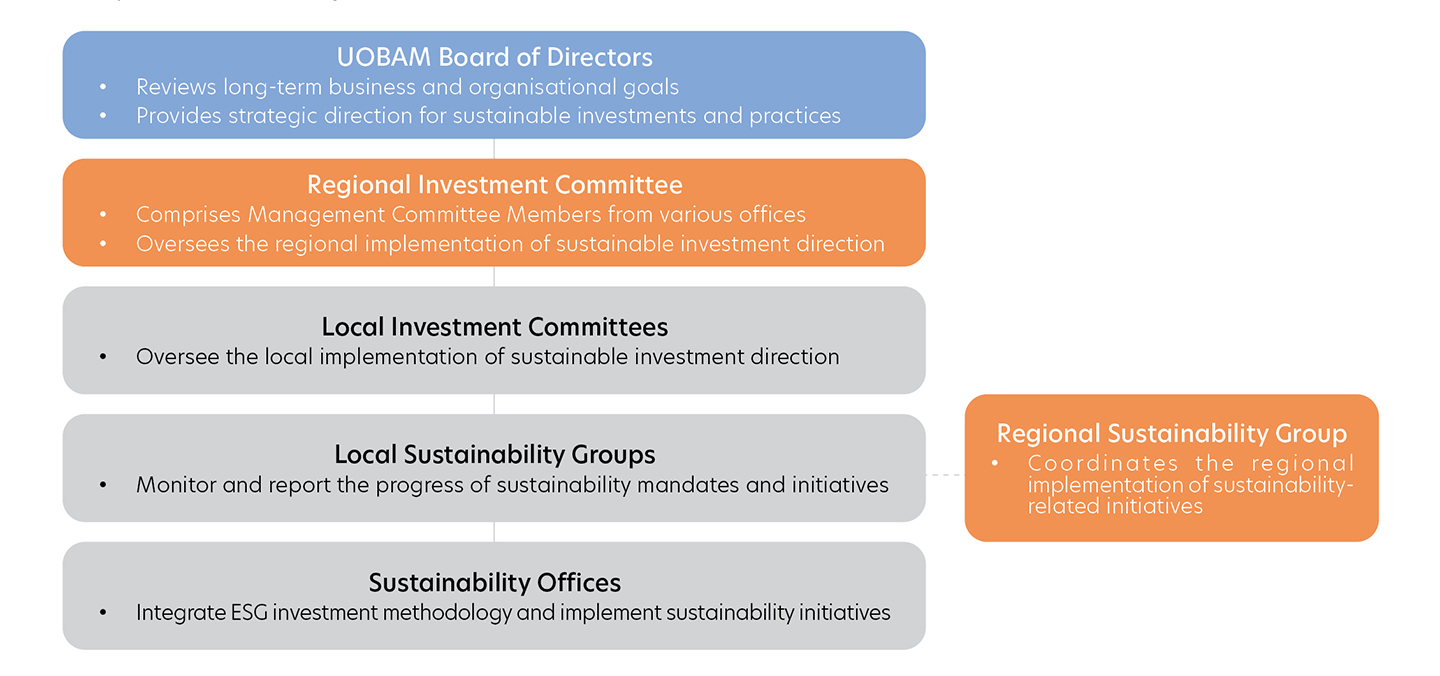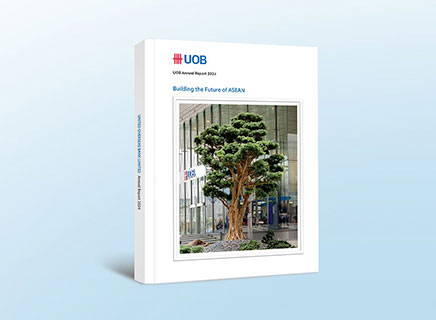
Creating Sustainable Funds
Through UOB Asset Management (UOBAM), we develop, manage and offer ESG-focused unit trusts across Asia.
ENRM Framework
UOBAM incorporates environmental risk in the management of our investor assets. The Environmental Risk Management (ENRM) Framework is part of UOBAM’s integral risk management framework, and is in line with the UOB Group ENRM Framework.
The ENRM framework guides the consideration of environmental risks throughout our business operations and investment decisions, with identification, assessment and monitoring of environmental risks in our portfolios on a regular basis using third-party climate-related data and metrics including, but not limited to, carbon emissions, emissions intensities, and climate risk-related scenario analyses.
Sustainable Investment Framework and Policy
UOBAM’s Sustainable Investment Framework and Policy guides the incorporation of ESG considerations into our fundamental analysis and investment approach across asset classes via:
- integration – explicitly and systematically including ESG issues in investment analysis and decisions to better manage risks and improve returns of investments; and
- screening – applying filters to lists of potential investments to rule companies in or out of contention for investment, based on best-in-class and negative screening approaches.
This framework and policy applies across UOBAM’s operations across the region, and is implemented within our investment process through the integration of ESG evaluation. This includes the assessment of companies’ material ESG factors determined by UOBAM’s proprietary materiality map.
We use various ESG data and metrics, including ratings provided by independent research agencies and other relevant information, such as news reports, to assess if particular ESG factors may be material to a company and result in any positive or negative impacts.
To derive the company’s real-time ESG performance, UOBAM will then employ our proprietary ESG evaluation model to weigh the significance of these data sets, conducting appropriate sector-specific adjustments as needed.
The Sustainable Investment Framework and Policy also includes our Environmental Approach, which incorporates environmental-related risks in our investment decision-making processes. Recognising that Asia remains heavily reliant on conventional sources of energy and there is a need for an orderly and just transition, our approach sets the following requirements:
- Exclusion of companies that derive 20 per cent of their revenue from thermal coal mining and/or power generation
- Energy Transition provision to allow up to 10 per cent of total portfolio weight for companies that derive ≥20 per cent of their revenue from thermal coal mining and/or power generation, but have initiatives and policies to transition towards cleaner energy sources, to ensure that only high-quality names committed to energy transition are held within our portfolios.
Beyond climate change, we consider issues including water risk, deforestation and biodiversity loss, labour rights and human rights as part of our holistic ESG assessment.
UOBAM governance structure
UOBAM’s sustainability governance structure provides oversight and accountability on the implementation of our ENRM Framework, Sustainable Investment Framework, Environmental Policy and Active Ownership Policy, all of which are reviewed annually.


Related

Offering ESG wealth solutions
We integrate ESG into our research, selection and investment processes as part of managing risks and optimising returns for our wealth customers.

Investing for impact
Through UOB Venture Management (UOBVM), we drive positive impact through investments in privately-held companies in Southeast Asia and Greater China.

Responsible financing
We play a vital role through our financing practices in shaping responsible actions from our customers as we collectively build a sustainable future.




